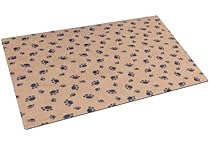by Diane Burket
Yes….your children love to eat potato chips and other junk food. That doesn’t mean it’s good for them. Give them a steady diet of junk food and they cannot be healthy. Same goes for your pets. Dry food for pets is pretty much junk food—even the better brands are still not giving your pet an optimal diet. Dry food is not a natural food for pets.
Dry food is cooked at very high temperatures, leaving the kibble practically vitamin and mineral deficient. There is a lot of harmful bacteria and mold in most dry foods.
Check out my post about killing your pets with dry food:
So how do you transition your pets away from unhealthy dry food?
First of all, do it when they’re healthy and have a good appetite. Sick pets generally don’t eat very much, so changing food can be difficult and could cause undue stress.
For many animals, dry food is like crack—they’re addicted to it. You can thank the pet food companies who coat the kibble with a tasty digest spray that is very addictive. Some pets just love the crunchiness of dry food. You say your veterinarian wants to sell you dry food? Hmmm. Anything to make a profit. There is very little food at a vets office that I would allow my pets to eat. Do your research. Find food that is very close to the type of food your pet would eat in the wild.
Be patient. The transition will probably not happen overnight. Dogs tend to transition easier than cats. Try mixing wet and dry food before switching entirely to wet food. If your pet gets loose stools from the wet food, don’t worry about it. Try another type of wet food and/or mix a little plain pumpkin in the food (not pumpkin pie mix).
An average cat should get around four to six ounces of wet food a day. That is not set in stone. If you see your pet losing too much weight, increase the amount of food. Too fat? Cut back.
We find that 1 can a day for our 35 pound mix breed dog is perfect for her age and activity level. More than that and she gets fat.
If your pet refuses to eat, give them dry food mixed with some wet food. Allowing a cat to go for extended periods of time without food could result in fatty liver disease. One of my cats doesn’t like to eat food in a bowl….so I put his food on the mat and he loves it. Go figure.
I warm my cat and dog food with warm water. That serves 2 purposes—the food is more fragrant and they get the benefit of more water intake everyday. Try petting your cat or dog while they’re eating. Sometimes that encourages them to eat.
After transitioning our cats and dogs to a wet food diet, they all lost weight and became more healthy. Their itching stopped, no more year-round shedding and we noticed a reduction in the amount of poop. Thank you! In addition, because they didn’t have dry food available 24/7, they were happy to try different types of wet food. They were much more picky when they had dry food accessible throughout the day. We used the remainder of our dry food as “treats”. Much cheaper than treats and no one knew the difference!
We feed our cats and dogs 3 times a day. That’s not always convenient for everyone. If you’re not home during the day, freeze some food. When you leave the house, let it thaw in a pet bowl. Your pets can eat it later in the day. When we’re not home, we have a petsitter visit 2 or 3 times a day for our cats and we take our dog to a dog boarder.
Be patient with the transition. Your pet’s health is worth it!
 |
| Our Larry – A rescue. Lost 9 pounds. Lookin’ good! |





